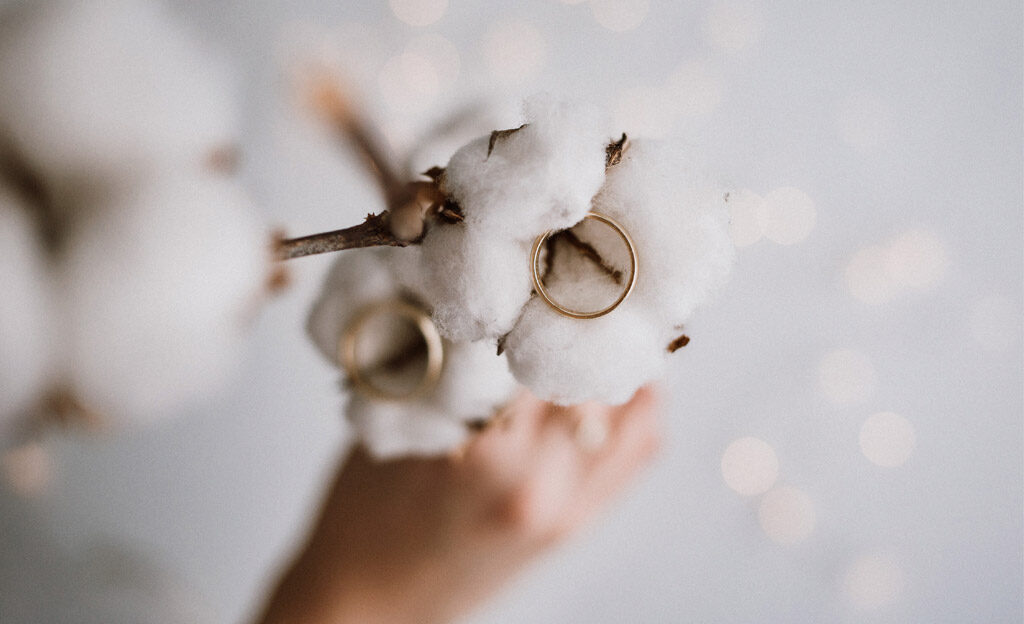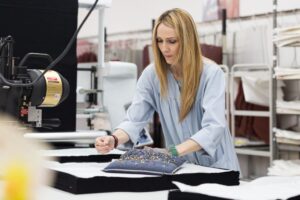How we make these garments
We control our products from start to finish, and when we started out there was no stretch fabric available, so we were pioneers in our field. We were looking for a fabric that would function as if it were a second skin, and stretch fabric turned out to be an intelligent fabric that, through a carefully studied construction, gave us excellent comfort.
What is the crafting and manufacturing process for ZD garments in our factory?
In today’s post, we are going to take you on a tour that will go from the preparation of fibre, to how we pass it to spinning. From the spinning plant we turn it into yarn, and then take it to the weaving room. We obtain the all-important fabric, we pass it to dyeing, and then we finish, and we can enter the cutting area.
Fibres
We can classify them as natural or chemical:
- Natural (they can be of vegetable, animal or mineral origin).
- Chemical (can be artificial or synthetic).
We start with the natural ones. If we take natural mineral fibre we will see that it comes from fibres that are produced through processes that are used above all in technical fabrics. Natural animal fibre can come from hair (like wool) or secretions (like natural silk). And natural vegetable fibre can come from stems (such as flax), leaves (such as esparto), fruits (such as coconut), sage (which would be rubber), or seeds (an example would be cotton).
Let’s talk some more about chemical fibres. As for the artificial ones, they are the remains of natural products such as wood or bamboo, which through a chemical process results in the fibre. And then we have the synthetics, which are already chemical products that, by way of another chemical product, obtain a fibre. Here we would include polyamide, elastomer, and polyester.
What do we use at ZD? Principally, Egyptian cotton, organic cotton, and soya yarn. In addition, to ensure they’re stretch fabrics, we use Lycra brand elastane. And to be able to weave this elastane we also add a small proportion of polyamide to the mix.
Cotton
This is a fibre that comes from a seed, a 100% vegetable fibre that has several sources. In regions across India, China and other parts of Asia you’ll find GOSSYPIUM HERBACIUM. This is sold in high amounts but it has the worst quality, as it features very short fibres, the colour is very yellowish, and it’s rough to touch. You’ll also find GOSSYPIUM HIRSUTUM, which is much better in terms of quality and is produced in Central America. The fibre is much longer, whiter in colour, and soft to touch and feel. Finally, we have GOSSYPIUM BARBARENSE, which is of extraordinary quality and comes from Egypt. This seed is grown in Peru, and it was Mr Jumel who in 1867 took the seed to Egypt believing that the weather was similar to its native area of Peru. This worked, and the seed proved to produce excellent cotton.
At ZD, we have been using this cotton for more than 45 years, but not everyone has access to cotton with these features, and the price is, of course, very expensive.
It’s cotton with very long fibre and great resistance to abrasion and breakage, as well as an extraordinary shine, softness, and very white colour. One of the most important things that cotton has is what’s called the micron. The micron can’t be too green nor too ripe (like apples), it has to be at its optimum point to produce good quality cotton. The seed of the fruit is what gives the tissue its fibrousness and can be harvested when it reaches its ideal degree of maturity, and this can be done manually (which is certainly the best option, but also the most expensive) or using machinery.
Once collected, the remains that it may have of plants and other debris are cleaned, it is placed in the browns (there will be some larger than others), and then it’s ready to enter the spinning process.
The spinning process begins with the opening line, the browns are put on and the machine mixes the fibre so that it’s as uniform as possible. This thread will stretch more and more and become finer, and then pass to the step where it is given a minimum twist so that it can be spun. Only those fibres that are extra-long will also go through the combing process.
Even so, there are always fibres that are leftover and loose and then comes the gassing process to remove these fibres. This is a very important step, especially if our objective is to extract a mercerised thread.
We start with very small spools, but then have to make very large cones for production. So we take several spools to make them.
The threads can be presented in various ways, and for us, the most important are the first and the last. We work with one end (for briefs, t-shirts) and two ends (socks). The two-stranded one is twice as strong because it features a twice twisted thread and we need it to have more resistance.
Mercerised yarn
To obtain mercerised yarn, it is necessary to work at two ends with a long fibre thread that we can comb and then gas because we are going to subject the thread to a caustic soda bath and very forceful stretching. Using the caustic soda bath, we will be able to hollow out the fibre, making sure there are numerous empty spaces inside. And by stretching it so hard, what we will get is a much more resistant thread.
If we compare a normal cotton thread with a thread that has gone through the mercerising process, we will see that the mercerised thread has a shine that the other does not.
The name “mercerised” comes from John Mercer, who did this test in 1844 to produce the thread that is so famous today.
At ZD, we use this mercerised yarn in boxers and yarn briefs, and in pyjamas. This thread goes by the name of Scottish thread. But, what is a Scottish thread? Well, it is nothing more than a commercial name that has been given to mercerised yarn, which is a benchmark for cotton of optimum quality from which we can make two ends. It is a luxurious, soft fabric, with exceptional touch and feels. The basic properties of this fabric include the possibility for more intense colours (because when this yarn is dyed, as it is hollow, it can absorb much more dye than usual), it has greater moisture absorption, it is more elastic, and it is more breathable.
Organic cotton: differences with common cotton
It is a natural fabric without the use of chemical processes. If we compare it with common cotton, we will see that, in the latter case, 70% of the seeds have been genetically modified. On the other hand, in the case of organic cotton, there is no modification taking place. It carries a certificate to prove it has not been modified. In addition, synthetic fertilisers are used in the cultivation of common cotton, something that simply does not happen in the case of organic cotton. In most cases, crops require intensive water irrigation. In contrast, when it comes to organic cotton, the use of water is managed efficiently thanks to the increase in organic matter in the soil. Regarding pest control, in normal cotton pesticides and insecticides are used to combat this issue, while with organic cotton natural methods are used, such as insects themselves (bees, ladybirds). In the former, the thread and the fabric are bleached before dyeing with highly toxic products such as chlorine, which can end up damaging our skin; and in the second the tinctures are made with natural dyes.
In addition, organic cotton does not cause allergic reactions on the skin, which breaths better and more naturally, and causes the person to feel more comfortable and refreshed.
The addition of Lycra
To make our fabric with these types of cotton, we have to add something so that it has an elasticity similar to a second skin. When we first sought it out, we found that elastane was hard to come by (there was very little and it was mostly used in swimwear). There were only two brands, and we decided to try both. After tests, we realised that Lycra gave us more advantages and a greater guarantee. That’s why we have been working with this brand on our garments ever since.
Lycra has high resistance and recovery power (it is capable of extending 600% of its original value), and also great qualities in terms of durability.
When we started our journey we found that, compared to cotton, Lycra was super fine, and when it came to weaving it broke. That’s why we resorted to adding a small portion of polyamide. We use polyamide 66, and we treat it through texturing, thus ensuring it doesn’t break or form “balls” in the fabric.
Fabric classification
Non-woven fabric: this is “throwaway” fabric and is characterised by right angles. There are many threads involved, but only one that wefts and weaves.
Material and knitting fabrics: these are made up of meshes and are very elastic (the wider the point, the more elastic it will be), but it doesn’t offer good recovery qualities. If we add Lycra to the mix here, for example, we create much more elasticity, meaning the fabric will also recover.









Reader Interactions